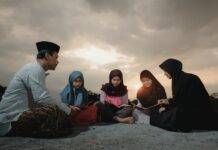This article has been written with both sadness and surprise. Sadness because I was born in a village where girls continue to be killed for ‘family honour’. And I am surprised because the news of the killing of a young girl by her family for a false idea of ‘honour’ was avoided by mainstream newspapers as if this is the new normal in the northern part of India. I know it may look opportunistic to write on something like this but the main reasons to write on this is first to highlight how a regular occurrences of an event may become a new normal in our society where discussion and reporting of these events gets a backseat and secondly, it is to analyse how patriarchy and caste rule the lives of people in the villages in very severe forms.
I was shocked to hear that a 22-year-old woman (Ritu) had been killed by her family members on 7th September in the Khandrai village which comes under the Gohana subdivision of Sonipat district in Haryana. Apart from being shocked as this kind of news is becoming the new normal in the northern part of India, I was also ashamed of the fact that I belong to the same village. The day I read this news in some newspapers I called up my family back in this village to enquire who this girl was and the response I received was that she belonged to the ‘other community’ not ‘ours’ as if this justifies not being sensitive or feeling ashamed.
Ritu had married Arjun, a resident of Garhi Haqiqat Village, distantly related to her as his mother originally belonged to same Khandrai village. She was killed using a sharp edged agricultural weapon which I am sure she must have used before marriage and must have played during her childhood days in the village. In her statement before the Duty Magistrate she had said that she wanted to stay with Arjun. She was killed brutally in her own home.
This murder looks like a simple case of honour killing where conservative parents are not in agreement with their children for choosing a particular partner but this goes beyond this false idea of honour or I would say ‘dishonour’. Roots of this action go deep into the idea of marriage, caste, endogamy, exogamy, the idea of love and women’s agency to choose for herself.
Most marriage norms and associated restrictions and the notions of honour are used to regulate women’s choices regarding the selection of marriage partner and expression of sexuality. These norms and values not only intrude into the personal space of consenting individuals but also restrict their freedom of choice in matrimony.
Marriages in Haryana and northern parts of India, in general, are guided by caste endogamy and gotra exogamy. As Arjun belonged to the same gotra because his mother belonged to the same village, this marriage was unacceptable according to the prevailing socio-cultural norms despite these being anti-constitutional and against the Hindu marriage act, 1955 which permits both sa-gotra (kin in the patrilineal line of descent whose members claim descent from the same gotra ancestor) and inter-caste marriages.
All caste groups exclude at-least three gotras (sub-caste is an exogamous patrilineal clan whose members claim to share descent from the same ancestor) of three relatives those of father, mother and paternal grandmother (father’s mother) for finding a partner for their children. Villagers also try to avoid making marriage alliances in neighbouring villages as boys and girls of this village and adjoining villages are considered brothers and sisters.
It means marriages are based on the idea of caste endogamy (marrying with your caste), villages exogamy (marrying outside your village or surrounding villages) and gotra exogamy (marrying outside your and three relative gotras).
Inter-caste and intra-gotra marriages are not only boycotted and ridiculed but sometimes couples are also met out with harsh treatment including their murder. This becomes more horrifying for women as patriarchal values system in which the notion of ‘izzat’ is gendered producing inequality and hierarchy having severe implication for women and men. Any violation of marriage norms on the part of women is not only just disobedience, as it also stigmatizes the entire family, clan, and community.
These kinds of cases still verify the influence of existing popular rural cultural beliefs among males such as lugai admi ki jutti ho sai (woman is no better than a man’s shoe), Ghori ar lugai ki lagam jitni kaske rakho utna achha (Like mare, a woman too should be put under control to stop her from running).
As it is rightly said that if you want to change something first you should start from your own home. And believe me this is the most difficult things to do. Working on change outside our home is totally different than working with those people with you have spent your initial years of life with. Honestly, I am not too sure what to conclude on this sad incident as daily it bothers me and forces me to think why I am not going back to my village and trying to work there. Maybe I am not that strong as of now but at least getting some courage in writing on this issue and accepting my identity of being from that village and state is may be a first step in that direction.
But overall much work needs to be done in this area especially in the context of Haryana because patriarchy and caste still operate very openly in people’s blood in Haryana.
Deendyal Singh, Ph.D. Research Scholar at TISS Mumbai, working on the issue of ‘Education and Human Development: A case study of Sonipat and Mewat district of Haryana’.














